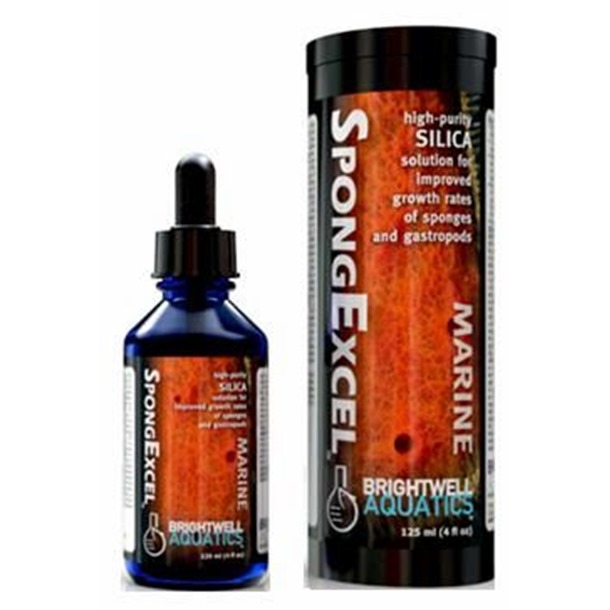Brightwell SpongExcel 60ml
You will earn 13 Points
Overview
- Ionic silica solution for enhancing growth rates of sponges and gastropods.
- 1 drop per gallon of water increases ionic silica concentration by ~0.20 ppm.
- May be employed in silica-limited systems stocked with sponges to improve water quality.
- Increases the rate of natural latent organic material uptake by these organisms.
- May be used to improve the rate of sponge growth in marine systems housing spongivorous.
- Suitable for fish such as marine angelfish, butterflyfish, and their allies. Providing them with greater access to their natural foods.
- Formulated by marine scientists.
Technical Background
Silica is an important nutrient in seawater; it is required by many organisms (primarily diatoms and sponges in terms of total silica uptake) for the production of biomass and is linked with the uptake of other nutrients, such as nitrogen and phosphorus. Sponges and diatoms can be significant nutrient sinks, and marine aquaria stocked with sponges, in particular, can benefit from the controlled addition of a silica solution.
The natural seawater concentration of total silica is ~2.8 ppm, however, this concentration varies by depth and region and is likely to be excessive in most marine aquaria. Rather than attempt to maintain this concentration in an aquarium, it is advisable to begin at a very low concentration (e.g. 0.05 ppm) and gradually increase this with time as the rate of silica uptake in the system dictates. Systems with considerable sponge growth tend to be silica-limited, therefore maintaining a silica concentration of ~1 - 2 ppm is likely to be of benefit.
Additionally, diatom growth may have a significant impact on the rate of natural latent organic material uptake and recycling in marine aquaria, leading to improved water quality; diatoms are also a valuable food source for various grazing fish and motile invertebrates. We are certainly not advocating that diatoms should be encouraged to grow unchecked in order to help improve water quality, however these organisms, in addition to sponges, can be a valuable part of a natural ecosystem that converts latent organic material into desirable biomass and supports greater biodiversity in closed marine aquaria through the maintenance of diatom- and sponge-grazing organisms.
